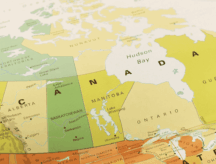Canada seeking more francophones under Immigration Levels Plan 2024-2026
According to Canada’s latest Immigration Levels Plan 2024-2026, Immigration, Refugees and Citizenship Canada (IRCC) is looking to welcome 31,500 French-speaking permanent residents (PRs) in 2025 and 36,000 newcomers under the same category in 2026.
An annual release by Canada’s immigration department, the Immigration Levels Plan is used to guide the number of new PRs that will be admitted into this country in each of the next three years.
Note: The Immigration Levels Plan breaks down PR targets according to each of Canada’s three general immigration classes: economic; family; and refugee/humanitarian.
Discover if You Are Eligible for Canadian Immigration
Notably, this year’s plan projects Canada to stabilize the number of new permanent residents in 2025 and 2026, keeping the overall admissions target at 500,000 new PRs in both years.
Despite the expected stabilization of Canada’s total admissions target, a deeper look into the numbers reveals that one immigration category is expected to see a growth in admissions over the last two years outlined in this year’s plan.
Which immigration category will see admissions targets rise between 2025 and 2026?
In 2026, IRCC has indicated that the admissions target for “overall French-speaking Permanent Resident Admissions outside Quebec*” will increase by 4,500 compared to the target in 2025.
*The distinction related to admissions outside Quebec is important because it reinforces that Quebec has its own immigration rules, programs and policies separate from the rest of Canada.
This is notable because it is the only admissions category where the stated target rises in the final two years of the Immigration Levels Plan. Meanwhile, as the overall admissions target (500,000) does not shift between 2025 and 2026, all but one of the other outlined targets are currently expected to remain stable over those years.
The one admissions category that is expected to see its admissions target decrease between 2025 and 2026 is the “Economic Pilots” category, which includes the following three immigration pathways:
- Agri-Food Pilot
- Rural and Northern Immigration Pilot
- Economic Mobility Pathways Project
The admissions target for this category is expected to decrease from 14,750 in 2025 to 13,750 in 2026.
Why might IRCC be looking to grow the number of French-speaking PR admissions outside Quebec?
Some rationale behind the increasing admissions target for overall French-speaking PRs may be found in Canada’s recent strategic report called “An Immigration System for Canada’s Future.”
This report, released by IRCC and the Canadian government, details findings and an action plan related to a new strategy for Canada’s immigration system following months of consultation with various stakeholders. As part of the new report, IRCC has outlined its goal to heighten “the vitality of Francophone minority communities”, including those outside of Quebec.
IRCC indicates that this part of its action plan is intended to help with the department’s desire to “develop a comprehensive and coordinated growth plan” for immigration in this country, an effort that includes “[supporting] communities through actions such as this. Specifically, IRCC says that their focus on increasing French-speaking immigration is part of exploring “opportunities to enhance regional immigration [and] supporting welcoming communities across Canada.”
In particular, IRCC has noted that they will undertake the following actions in pursuit of this goal:
- Develop a new Francophone Immigration Policy to “work toward restoring and increasing [the] demographic weight” of Francophone minority communities across Canada
- “Boost promotion and selection efforts” of French-speaking PRs
- Support the “settlement and integration of French-speaking immigrants in Francophone minority communities”
- Set “ambitious yet attainable targets to increase [Francophone PR admissions] on an ongoing basis”
Put together, the projected increase in the admissions target for this category of new PRs can be explained through Canada’s goal of growing and strengthening French-language immigration across this country.
IRCC’s recent success toward increased Francophone immigration across Canada
In November this year, Immigration Minister Marc Miller reaffirmed the value Canada sees in Francophone immigration during National Francophone Immigration Week. As part of his statement, Miller said: “National Francophone Immigration Week ... allows us to highlight the importance of Francophone immigration to Canada. It is ... the time to express our appreciation for the extraordinary contribution of French-speaking immigrants to Canada’s cultural, demographic and economic richness.”
Back in April this year, Canada also released its Action Plan for Official Languages 2023-2028, detailing how the immigration department is obtaining funding to support the growth of official languages in this country.
As part of this plan, IRCC has indicated that it will spend $18.5 million “to promote and build recruitment support [for Francophone immigration] both in Canada and abroad, including in Africa, Europe, the Middle East, and the Americas.” Additionally, IRCC says that $50 million “will go to further consolidating the Francophone integration pathway, [including making] settlement and integration easier for newcomers to Canada and [improving] the reception capacity of Francophone minority communities.”
These future initiatives are intended to work in concert with current efforts to increase Francophone immigration across Canada, including the way Francophone immigrants benefit from the Express Entry application management system – both in the context of standard Express Entry draws and IRCC’s new category-based selection system.
More: Learn more about Express Entry
Specifically, Express Entry candidates with French-language ability can earn additional Comprehensive Ranking System (CRS) points, which will enhance their chances of receiving an Invitation to Apply (ITA) for Canadian permanent residence during a standard draw.
Further, as part of IRCC’s new category-based draw system, IRCC has dedicated one of six categories specifically for immigration candidates with French-language proficiency. This means that eligible immigration candidates with the ability to communicate in French are eligible for an Express Entry ITA in a separate type of draw as well as standard Express Entry draws that prioritize a candidate’s CRS score.
Important: Click here to learn more about category-based Express Entry draws
Through initiatives such as those indicated above, Canada’s immigration department has been able to successfully increase immigration to Francophone minority communities across this country outside of Quebec. This includes reaching their stated Francophone immigration target - settling 4.4% of French-speaking immigrants outside Quebec - in 2022 by welcoming more than 16,300 new immigrants into such communities.
- Do you need Canadian immigration assistance? Contact the Contact Cohen Immigration Law firm by completing our form
- Send us your feedback or your non-legal assistance questions by emailing us at media@canadavisa.com







